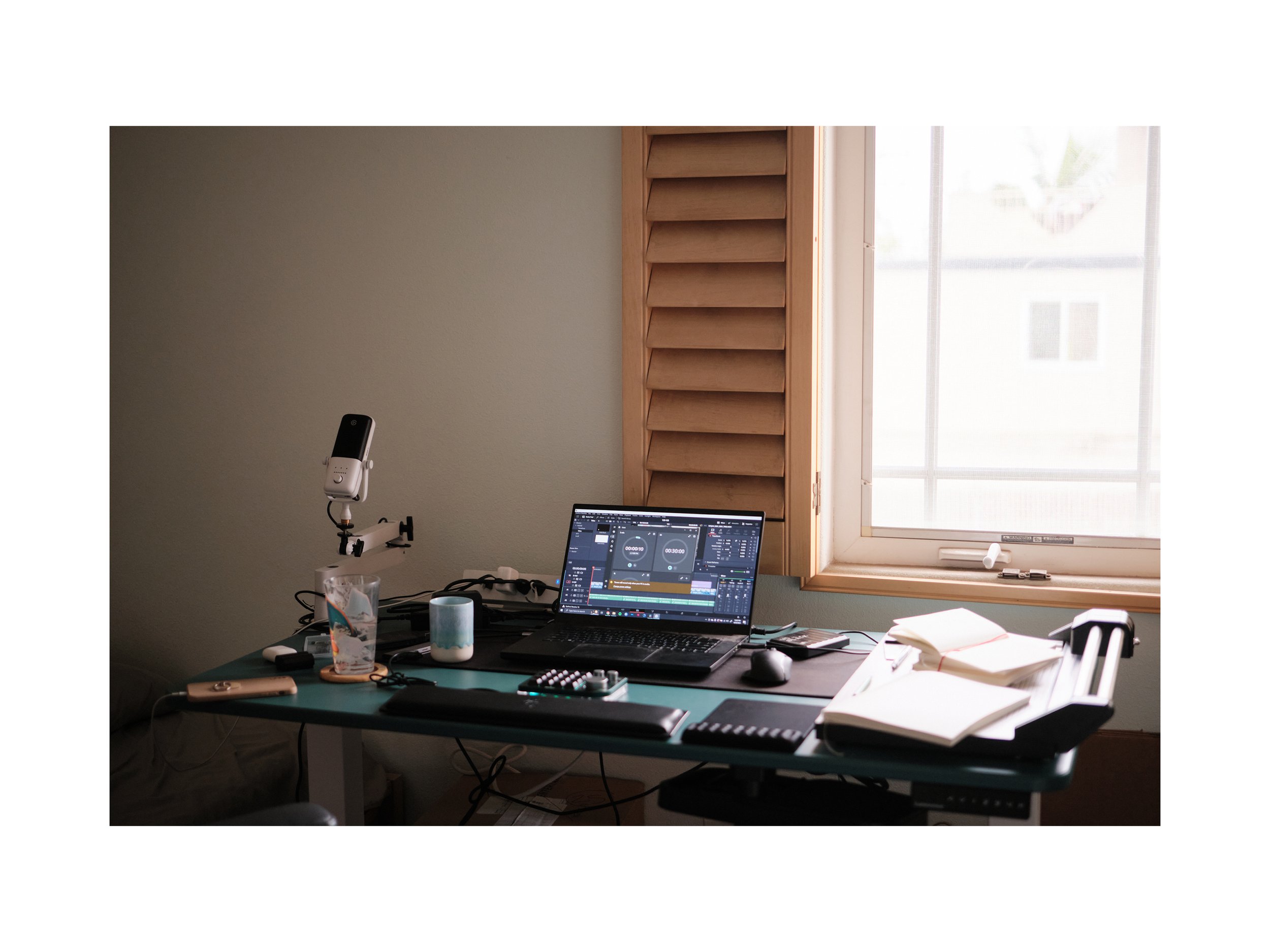A Helpful Productivity Guide for the "Lazy Perfectionist"
The lazy perfectionist.
One who wants to get things done, and in a particular way, but can’t seem to do them.
Because if it’s not going to be done right, it’s going to be half-assed, or it’s going to be just a fraction of what it could be, then what’s the point?
I used to be a lazy person. Actually, I’d still consider myself a lazy person.
There are plenty of things I want to do, want to create, want to make but when the time comes, 90% of the time I don’t want to do it.
I’m not as motivated or inspired as I was when I first thought of the idea.
Thankfully over the years, I’ve found ways to hack my brain and work around my own quirks.
So although I’m lazy, I’m still productive and disciplined.
And today I want to share those things with you guys because if you’re anything like me, this’ll help a lot.
Plus at the end of the video I’ll give you guys the biggest mindset shift that has helped me flip the script on perfectionism.
Step One. Making It Easy.
The issue that many of us face is that things are way too easy not to do.
We decide to put things off and instead spend hours scrolling on our phones.
We ignore the work and instead go for a drink with some friends.
We perpetuate a cycle of laziness.
If you feel like you’ve done this many times, understand you are not alone.
This is pretty common nowadays and it’s almost normal to be at the mercy of our own bad habits.
We know it’s not good for us - but we do it anyways.
Something I’ve found that really works for me is learning how to make things easy to do.
This was a concept I applied to my own life from Atomic Habits.
If we can make the thing we want to do easy to do, we can increase the likelihood we’ll actually do it.
For example, when working on editing photos and sequencing images for this new photo-zine, there are a few things that help make it easier to do.
One is by having everything I need on my desk ready to go.
There’s no longer any setup because everything’s already setup.
And yes, it may look a little messy but think about how much time I save when starting a task.
Doing this makes it easier to sit down and get to work.
Another way I do this is by starting things as soon as possible.
Something I learned from going to the gym is that the hardest part is just getting there. It’s not even the workout.
When I’m at the gym my body does the exercises and my mind knows what to do.
But it’s the lead up: the getting ready, the getting in the car, the committing that “I am going to workout today” - that is the hard part.
However, if I just run through that sequence and get to the gym as fast as possible, my mind doesn’t even get a chance to complain.
Instead I’ll think, “I’m already at the gym, I might as well work out.”
So you can apply this to anything.
Set up the things you’re going work on ahead of time and start the work as quickly as possible.
You’ll begin to notice how much easier things are to do when everything is ready for you, and when you’ve cut out all that pre-workout fluff.
Step Two. Boredom.
The second solution to lazy perfectionism is to use boredom to your advantage.
This is a tactic that many writers like Seinfeld have used that allow them to get things done.
Set up a period of time throughout the day where you don’t have to do the work but you’re not allowed to do anything else.
Even if the work is agonizing and you don’t want to do it, the pain of boredom is usually worse than the pain of doing the work itself.
An experiment was done that tested this (link below) where participants were left in an “boring” situation. In this room they were given the option to shock themselves.
What they found was that the people in the boredom situation gave themselves more shocks and with a higher intensity than that of the other room.
Meaning people would rather be in pain than be bored.
I’ve applied this to my life many times and it works.
Not the shocks, but the boredom.
When it’s time to work, I tell myself I’m not allowed to do anything else.
No phone, no scrolling, no checking emails, nothing.
The only thing I can do is the work itself or sit there in misery.
And it works 100% of the time because I’d rather do the work than just sit there.
This shows just how powerful boredom is and how we can use it to our advantage.
If you need to get something done, bore yourself into doing the work.
Put your phone away, close the excess tabs, turn the music off and just sit there.
Eventually you’ll get so bored you’ll get to work.
Apply this to everything you do and you’ll find yourself being more productive than you’ve ever been.
Link to the study:
https://pubmed.ncbi.nlm.nih.gov/26847946/
https://www.sciencedirect.com/science/article/abs/pii/S0165178116301524?via%3Dihub
Step Three. Procrastination.
In this final point, we’re going to flip the script on our own perfectionism and learn to use procrastination to our advantage.
The thing about perfectionism is that by trying to make everything perfect we can put off a lot of work.
We can turn simple and easy tasks into excuses by saying “Oh, I want it to be good so I’m taking my time on it.”
And then we procrastinate, procrastinate, procrastinate, and never get anything done.
This is a problem.
Because it lets us self-justify our perfectionism as a good thing.
There’s a great quote by Steven Barnes that says, “Perfectionism is procrastination masquerading as quality control.”
So here’s the thing. I’ll agree that perfectionism can be good in some cases.
You don’t want to put crappy stuff out.
But too much of it and it becomes exactly like the quote above: “masquerading as quality control.”
So what do we do?
The way to balance perfectionism and procrastination is by setting up systems.
Systems will allow you to make sure you’re still making progress, despite your procrastination.
The easiest system you can set up is a quota.
This can mean reading 15 minutes a day or writing 30 minutes a day - whatever the thing you want to do is.
It might not be what you’d consider “productive”, but even 15 minutes a day, every day, can really add up over the course of a year.
This is what I do in all my work from making YouTube videos, to releasing photography prints, to building this upcoming photobook.
Everyday I work from 8/9am to 1pm, doing the work regardless of if its good or bad.
That way, progress can still happen while my mind is “perfecting things” and figuring stuff out.
And some days, I’ll have to go back and redo a lot of things but the work I did that day still gave me a clue on how I “don’t” want the end result to be.
So a step backwards can still be progress if it means 3 steps forwards.
So although some days are less productive than others, every day moves the ball forward little by little.
If you’re struggling with perfectionism, understand that perfectionism can be an excuse to procrastinate.
But if you ignore the voice in your head telling you its not perfect, and you simply fill your quota each and every day, you will make progress.
Try it out, it might change your life.
Lets sum things up real quick:
Step one, make things easy to do.
Step two, bore yourself into doing the work.
Step three, set up a system so your perfectionism turns into productivity.
And remember, if all else fails, at the end of the day you have to just do the work.
Thank you for reading.



